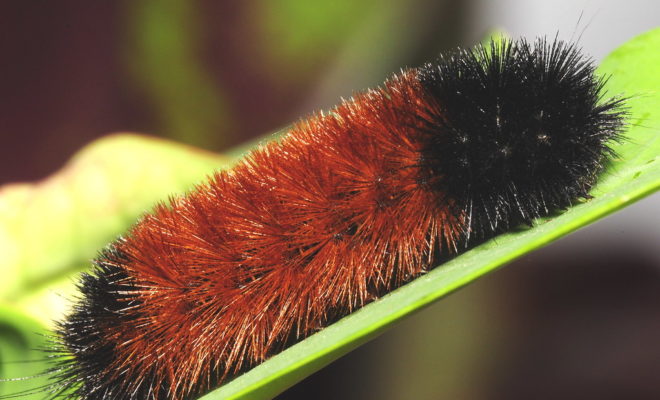Studied by Baylor University in the Lake Waco Wetlands (as well as other parts of Texas), the woolly bear caterpillar is black on both ends with a rust-colored middle and is completely fuzzy. Also known as the woolly worm in other parts of the southern U.S., it’s known to curl into a little ball and play dead when it’s disturbed. However, in addition to this unique trait, word has it that it has the ability to predict the severity of the coming winter, by way of its coloration. The concept began in colonial times but grew into full-blown folklore following a 1948 study.
Dr. Howard Curran (Entomology Curator at the American Museum of Natural History) conducted the study on Bear Mountain, New York, in the presence of some colleagues and their wives, as well as a reporter. He looked at 15 specimens of the woolly bear caterpillar, counting their bands. Following that, he made a prediction for the upcoming winter weather. The story was then published by the New York Herald Tribune but was also picked up nationally. The premise was that the amount of black on the species in the fall time varies in proportion to how severe the next winter would be, based on the location in which the caterpillar was found. The longer these bands, the longer and colder the winter would be, with more snow. Likewise, depending on the width of the middle brown band, one was said to be able to predict how mild the upcoming winter would be. The theory even goes to the extent of saying the parts of winter that could be determined to be the most severe, based on the position of the longest dark bands on the body of the woolly bear caterpillar. Former weather forecasters stated that they felt the 13 segments to its body might correspond with the 13 weeks of winter. And if its tail was dark, you could be right in thinking that the coming season would be a cold one. The variations on this tale were that if its coat was very woolly, it would be a cold winter, or if it was found to be traveling in a northerly direction, winter would be mild.





